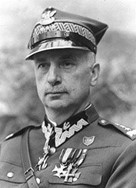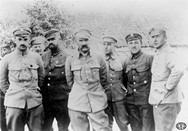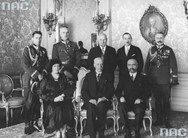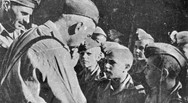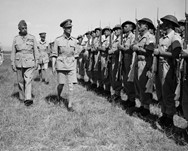General Kazimierz Sosnkowski
Born Warsaw, 1885 and died in Arundel, Quebec, 1969.
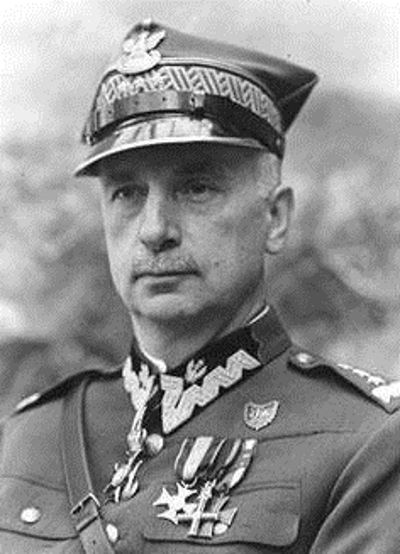
Born in Warsaw, Sosnkowski grew up in the Russian Empire. After meeting Józef Piłsudski in 1904 he joined the underground Polish Socialist Party. A dedicated follower of Piłsudski, his involvement in revolutionary activities forced him to go into exile. Together with Piłsudski he settled in Lwów, then part of the Austro-Hungarian Empire, where they organized a para military group that opposed the Russian Empire's control of Poland. When these paramili tary units were expanded into the Związek Walki Czynnej (Active Combat Association), Sosnkowski served as part of the central command. After the Riflemen's Association was formed as a legal front, Sosnkowski became its Chief of Staff.
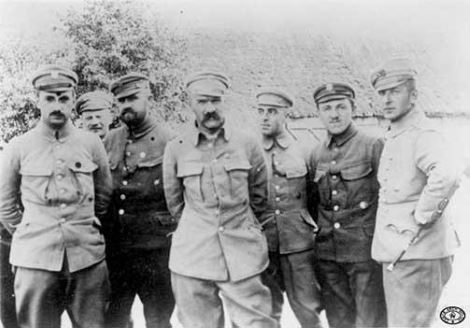
Staff of the 1st Brigade of the Polish Legions in Karasin, May 1916. General Sosnkowski (left) and Józef Pilsudski (center).
Following the outbreak of the First World War Piłsudski formed the 1st Brigade of the Polish Legions, with Sosnkowski serving as his Chief of Staff and second-in-command. During the Oath crisis (Kryzys przysięgowy), when Piłsudski instructed the Polish Legion to refuse to swear an oath of allegiance to Kaiser Wilhelm II of Germany, Sosnkowski was arrested along with his commander and imprisoned in Magdeburg.
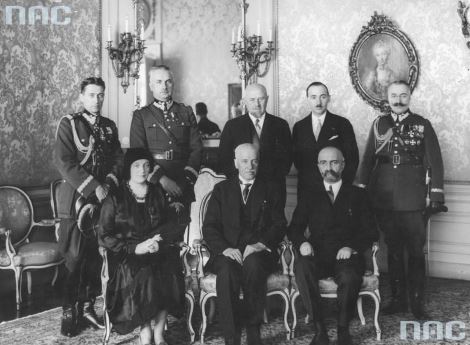
General Sosnkowski (standing 2nd left) at the ceremony to present President Ignacy Moscicki (sitting center) the Polish Cross of Independence with Swords in the Royal Castle in Warsaw.
After the end of the war he was released and became Deputy Minister for Military Affairs in the new Polish Second Republic, serving in that position during the Polish-Soviet War. Between 1920 and 1923 he was Minister for Military Affairs. Subsequently he served in a number of diplomatic roles, including a brief period as Polish Representative to the League of Nations. In 1925 he returned to active duty as Commander of the VII Corp District. Despite his long association with Piłsudski, he was not privy to the May Coup.
Despite this he continued to serve in Piłsudski's Sanacja Government, becoming Army In spector in Warsaw and serving in diplomatic capacities. Sosnkowski was considered a possible successor to Piłsudski, but lost out to Edward Rydz-Śmigły. Thereafter he was largely excluded from power by Rydz-Smigly and President Ignacy Mościcki. During the Invasion of Poland he was recalled to command the Carpathian Army (Armia Karpaty).
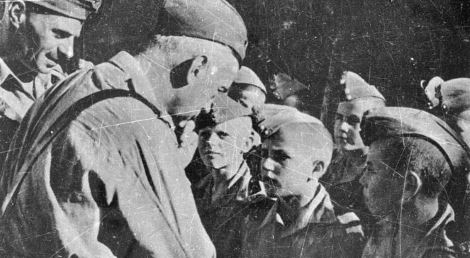
General Sosnkowski and General Wladyslaw Anders at the youth brigade school, Palestine, 1943.
Following the defeat of the Polish Army, he made his way to France via Hungary and be came involved in the Polish government-in-exile, initially as Minister without Portfolio. After Władysław Sikorski's death in 1943, he succeeded him as General Inspector of the Armed Forces. At the end of the Second World War he emigrated to Canada.
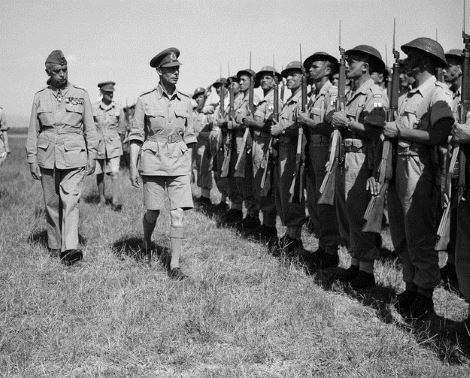
General Sosnkowski with King George VI reviewing troops of the Polish II Corps in Italy, 26 July 1944.
Sosnkowski, over his career, used a number of noms de guerre, including "Baca" (Polish mountaineer term for "shepherd"), "Godziemba" (the name of his herditary coat-of-arms), "Józef" (Polish for "Joseph"), "Ryszard" ("Richard"), "Szef" ("Chief").
At the League of Nations - Prohibition of bacteriological weapons
In 1925, as the Polish Permanent Representative to the League of Nations, General Kazimierz Sosnkowski, initiated the adoption of the first international instrument addressing Biological weapons of Mass Destruction – the Geneva Protocol for the Prohibition of Poisonous Gases and Bacteriological Methods of Warfare.
